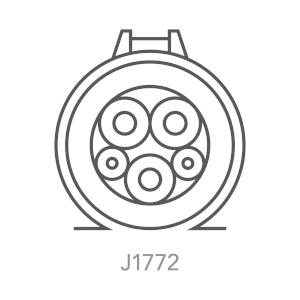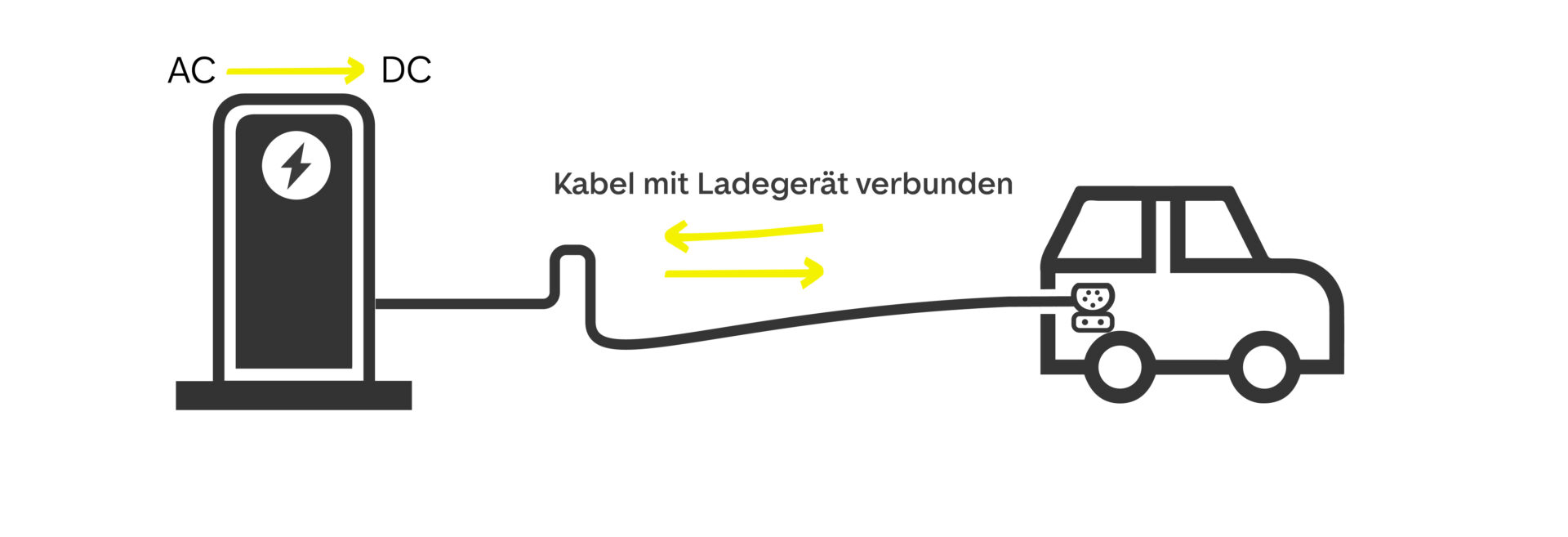Plug types electric car: This is how CCS, CHAdeMO and Co. differ
Are you interested in an electric car? Then you've probably wondered what types of plugs there are and how they differ. So that you know exactly what to look out for when buying, we have summarized everything you need to know about plug types, charging types and charging cables for electric cars in this article.
Every electric car has different charging equipment. These differ depending on the manufacturer. The plug is decisive here, because it decides on the charging method of the electric car. Before you buy, we will inform you about what the equipment on your future car means for you. Find out everything you need to know about the different plug types and charging methods here.
What types of plugs are there?
Type 1 connector

The Type 1 plug is widely used in Asia and the United States. The single-phase plug has a charging power of up to 7.4 kW and is suitable for alternating current (AC). The disadvantage of this type of plug is that there are hardly any charging stations with an available Type 1 connection in Switzerland. Therefore, an adapter cable is often needed to be able to charge the electric car at a type 2 station. In addition, only single-phase charging can be done, which takes longer. There is no fast charging function available for the Type 1 plug.
Type 2 plug

The Type 2 plug has established itself as the standard plug in Europe and is recognised as a standard plug. Public charging stations therefore almost always have a type 2 connection. This type of plug is designed for alternating current (AC) and charges in three phases. It has a charging power of up to 43 kW. A plus of the Type 2 plug: It is possible to lock the charging cable. This prevents unintentional unplugging during the charging process. Like the Type 1 plug, this type of plug does not have a fast charging function.
CCS Connectors 1 & 2


The CCS 1 & 2 connector type is widely used in Europe as well as in the USA. This type of plug is suitable for both alternating current (AC) and direct current (DC) and allows for fast charging. The CCS 1 & 2 is an extension of the Type 1 and Type 2 connectors. It is also called a combo plug because it has the standard Type 1 or Type 2 plug. In addition, a DC connection option is available. The charging power of the CCS 1 & 2 is usually 50 kW. However, this depends on the charging station and not on the plug. Good to know: Newer charging stations support even higher charging power than 50 kW.
CHAdeMO (Charge de Move)

CHAdeMO is a type of connector that is common in Europe and the USA. However, it is mainly used by the manufacturers Nissan, Kia and Mitsubishi, as it is considered the standard plug in Japan. This type of plug is suitable for alternating current (AC) and direct current (DC) and has a fast charging function. In addition, the CHAdeMO connector enables bidirectional charging. The only disadvantage: In Europe, CHAdeMO is less common than the Type 2 plug.
GB/T

GB/T is a connector type standard. This includes various GB/T connectors with different charging methods. The standard alternating current (AC) plug is similar to the European Type 2 plug. The power of the AC cable is typically 11 kW to 22 kW and the maximum power is 43 kW. The direct current (DC) version is similar to CHAdeMO and has a conventional power of 50 kW. The maximum output of the DC cable is 250 kW. This plug is mainly used in China.
Tesla Supercharger

Der Tesla Supercharger wird in Asien, Europa und in den USA verwendet. Ladungen sind bei diesem Stecker sowohl mit Wechselstrom (AC) als auch mit Gleichstrom (DC) möglich. Zudem verfügt der Tesla Supercharger über eine Schnellladefunktion. Die Ladeleistung beträgt bis zu 120 kW und mit einem Typ-2-Verbindungsstück kann das Elektroauto sogar an einem Typ-2-Anschluss aufgeladen werden. Ein Nachteil: Dezidierte Supercharger-Anschlüsse sind seltener zu finden.
Our tip: It's best to choose a Type 2 compatible system. These are widely available and most charging stations offer Type 2 charging options. If you want to be on the safe side, the CCS-2 plug is suitable, as it also supports charging with direct current (DC).
Charging cables for electric cars: How are they distinguished?
When buying an electric car, you should not only know about the different types of plugs. You should also be familiar with the different charging cables. We have compiled all the important information for you here.
Mode 1

The Mode 1 charging cable has a direct connection to a household socket without any additional safety element. However, this charging cable is prohibited in many countries. Special safety restrictions (residual current protection device) must be observed.
Mode 2

The Mode 2 charging cable has a connection for a household or industrial socket. However, this variant requires an additional safety element on the cable, called the control box. Even with Mode 2, the safety regulations must be observed, which differ from country to country. As long as the electrical installation meets the requirements, this charging cable is permitted in Switzerland.
Mode 3

The Mode 3 charging cable is suitable for charging boxes and wallboxes that are permanently connected to the mains. The Control Box is integrated into the charging box. The Mode 3 charging cable is a connection cable (AC) between the charging station and the electric car, such as type 2 to type 2. The Mode 3 charging cable is the recommended standard for charging electric vehicles at home and has a charging power of up to 43 kW.
Mode 4

The Mode 4 charging cable is a DC charging cable with a charging power of over 50 kW. It is suitable for charging stations equipped with an AC to DC converter. This enables the charging of the electric car with direct current and thus fast charging.
E-cars offer you many advantages and convenience. Are you convinced and ready to make your choice? Browse our range and find your perfect electric car.